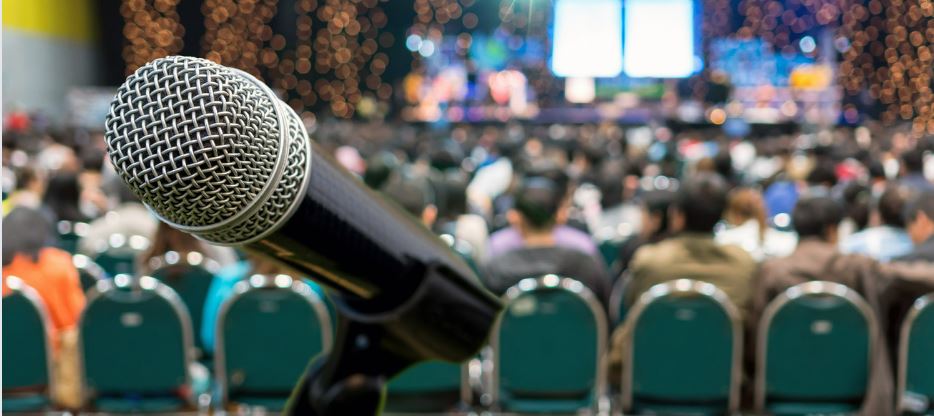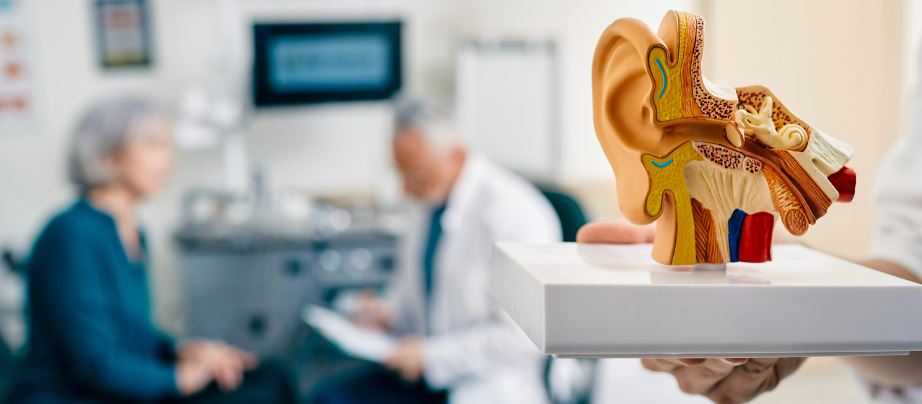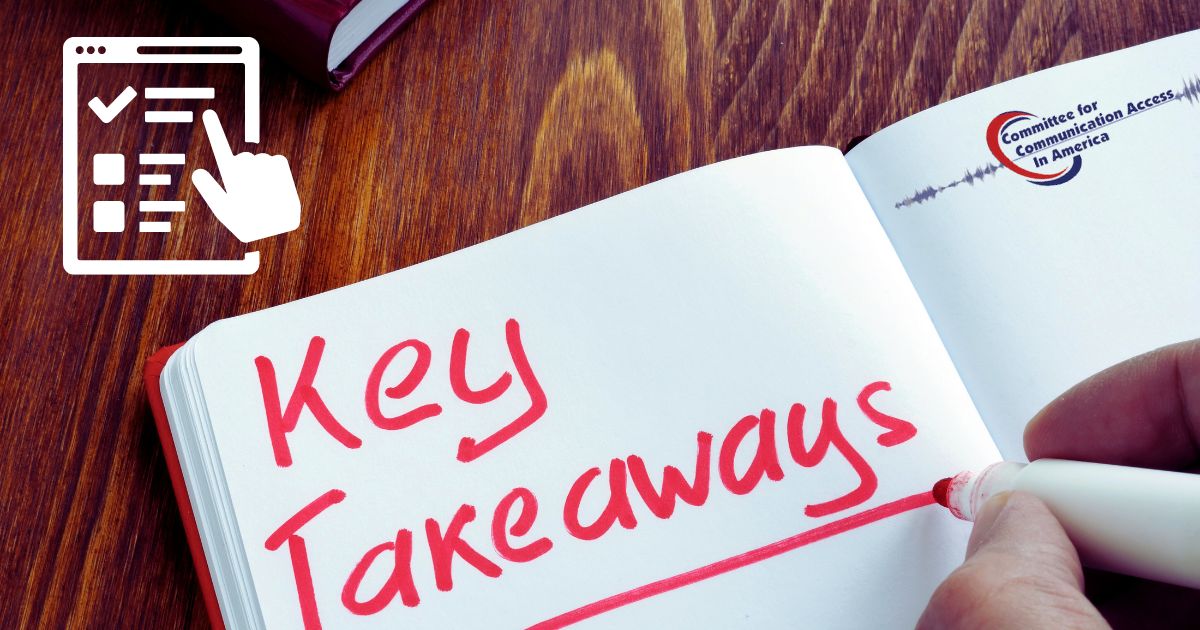Assistive Listening Systems (ALS) play a crucial role in enhancing communication for individuals with hearing loss or speech disorders. However, despite their availability, there are instances where these systems are not heavily utilized. To delve into this issue, an ad hoc committee of advocates for people with hearing loss (The Committee for Communication Access of which this writer was the chair) conducted a comprehensive survey on the matter.
That survey encompassed both assistive listening and captioning but the focus here is specifically on assistive listening. Respondents with severe to profound hearing loss participated disproportionately in the survey so, to ensure balanced results, the survey cross-tabulated responses based on factors such as degree of hearing loss, age, experience with hearing aids, and other criteria. This provided a comparison to that dominant group – those most inclined to utilize an ALS – to those with less need to do so.
The results of the survey provided an extensive list of takeaways for people who install, operate, and use these systems as to why they may not always be fully utilized.
For A/V installers
The survey confirmed the claim by many with hearing loss that hearing loops are the preferred assistive listening technology of their contemporaries. Among the ALS technologies available, hearing loops were preferred by 60% of respondents with FM/RF, IR, WiFi and hard-wired systems dividing up the other 40%. When finding an ALS actually in operation in a venue, respondents reported that system to be a hearing loop only 24% of the time. That’s an obvious reason an ALS is not used by some – it’s not a hearing loop.

Were installers to focus on a cost per user basis instead of on the cost of installation, there would be many more hearing loops in operation. 69% of users with telecoils in their hearing aids said they “always or usually” use a hearing loop if one is present. If they and others have to borrow a receiver and neckloop to access a system only, 39% offer that response. Without the neckloop option, when all hard of hearing participants offered a response the figure was only 37%. This clearly demonstrates that what guides the decision to use an ALS is the ability to connect without the need to borrow and return venue owned equipment. One could conclude that A/V installers are doing venue management a disfavor if they discourage a request to install a hearing loop and, instead, recommend a competing technology.
Once an ALS is installed, a really conscientious installer should ask to be allowed to explain the system to staff members who will be operating the system and to those loaning out the receivers and earphones or neckloops so they won’t, like one respondent reported, tell a borrower that the lanyard for the receiver is a neckloop. Lack of knowledge about hearing loops on the part of sound technicians is often the reason that receivers, and particularly those with neckloops, fail to provide adequate communication access.
Respondents reported sometimes having to drape a neckloop over their ears to get it to work because the signal being sent to it lacked adequate volume. That’s surely a reason to not use the system in the future.
Takeaways for venue management
The next takeaway has to do with signage and promotion of the ALS and this applies both to installers and to venue management. The ADA has very specific instructions in regard to signage and it would seem the installer, as the “expert” on the ADA requirements, should not only provide management with signage (or graphic files for producing signs) but also instructions as to its placement. They could then also review with venue management how to promote the ALS via pre-event announcements, notices of the system prominently placed in printed programs and advertising, and making the equipment loan desk easily found. The lack of these things was cited by survey respondents in written comments they included when taking the CCAA survey. All contribute to non-use of the systems..

Respondents to the survey indicated they look for or request communication assistance nearly 50% of the time when visiting a venue where they think hearing could be problematic. 47% say they avoid going to a place where they think hearing could be difficult. If they go to such a place, an equal number said they look for or inquire about an ALS. Over 62% said they seldom or never find an ALS available. One could speculate as to how often there actually is a system but no signage or other indication that it’s available.
A word search for “battery” or “batteries” found hundreds of complaints about them being a problem in written comments from participants. Many found the batteries dead when they turned on the device while others complained they went dead partway through the event. Respondents repeatedly recommended that management establish an adequate system for recharging receivers upon their return to ensure against this problem.
Another top complaint was about the process of borrowing equipment with poorly trained staff being one of them. One participant told of a staff member insisting the lanyard for the receiver was the neckloop being requested. Long lines to borrow equipment were cited as were the same lines to return the equipment when the event ended. There were complaints about what was done to ensure adequate hygienic care of the earphones and about the difficulty of using earphones with hearing aids or a CI.
Among other complaints registered by survey respondents that could hinder the use of an assistive listening were:
- Some hearing loops have dead spots or weak signal
- Not enough headsets on hand
- Interference in the signal sent to the receiver
- Quality of sound was not good
- Not enough volume available on earphones
- Neckloops don’t work
- Many places don’t offer neckloop option to earphones
- Presenters use mic inconsistently
- On/Off switch hard to find
- Headset too uncomfortable
- Loop not working at ticket counter
- Movies theaters often do not keep their equipment working well.
- Counter-top/service point hearing loops iffy-sometimes working, sometimes not.
- I rarely find assistive systems.
- My audiologist is not helpful in terms of assistive tech.
- Hearing aid specialist was not forthcoming about the options to help me.
- Just too much hassle
Takeaways for hearing care providers
Since the hard of hearing prefer hearing loops, it would seem that hearing care providers would always counsel clients on telecoils even if not in one of the eleven states that mandate such counseling. This then rightfully leaves the decision on the desirability of the technology to the client rather than being a decision by the provider. Unfortunately, the survey established that such counseling did not take place nearly 50% of the time – that the majority of respondents learned from some other source about telecoils and hearing loops. 17% of respondents actually said they knew nothing about telecoils until they participated in the survey.

It was also not uncommon for some to say they were actually discouraged from getting telecoils by their provider. More and more hearing aid models no longer offer a telecoil option but that can be overcome by the provider recommending a remote mic with a built in telecoil, allowing the user to connect to a hearing loop with that device.
The claim that a client doesn’t need telecoils because there’s no place to use them is becoming less true daily. More and more places of worship, performance spaces, legislative chambers and other gathering places are now providing communication access through the various ALS technologies. Hearing loops are showing up in taxicabs, buses, subway cars, airports, museums and myriad other places where hearing can be most problematic. The claim that clients don’t need telecoils because they will have Bluetooth is, at the very least, disingenuous. Telecoils will connect to any ADA compliant assistive listening system. Bluetooth cannot do so. It’s basically a very versatile and valuable one to one technology. Objective observers will look at the two systems and say a user would be best served by having both.
The written responses from some of the survey’s 1500+ respondents demonstrate a good deal of sophistication and knowledge on the part of many. For anyone genuinely interested in understanding and possibly addressing the needs and concerns of people with various degrees of hearing loss, a review of the full report and of the hundreds of comments from respondents to this survey should be a “must do” project. They can be downloaded and reviewed at www.ccaa.name.
Takeaways for the hard of hearing
Nobody understands the impact of hearing loss on a person’s life better another hard of hearing person. Assistive listening systems will be installed, used and maintained only if their users speak up. If a hard of hearing person’s battery went dead, don’t just tell the agent at the desk, let management know. If the neckloop sound is too weak, tell management. If an ALS is needed, speak up – they’re not always required where they’re needed. If you have a good experience with an ALS speak up too, and let management know it was appreciated.
When told he had suffered a sudden severe hearing loss, actor Robert Redford asked if he could get it back. He was told no. That was not entirely accurate – he, like you at a Robert Redford movie, can get much of it back by using the ADA mandated ALS.
About the Author
Stephen O. Frazier is a freelance writer and long time advocate for people with hearing loss. He served a decade as the New Mexico Chapter Coordinator for the Hearing Loss Association of America and on the HLAA Get in the Hearing Loop committee while also serving in a variety of positions in the local HLAA chapter. He has presented workshops at the national conventions of the nation’s three top hearing loss support organizations and in person or via zoom to groups stretching from California to New York. His work has been published in most of the major hard copy and online hearing loss related periodicals and he publishes a quarterly newsletter entitled “In the Loop”. Sign up for it at https://www.sofnabq.com/Contact.html or it and his writings are posted at www.sofnabq.com . Steve can be emailed at [email protected].







